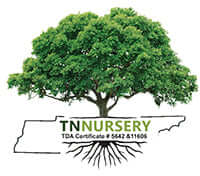
Using Live Stake as Planting Material
Share
Live Stakes
Vegetation cover is very crucial for human and animal life. It is common to find an area cleared by social or geographical disasters. Therefore, it is necessary to replace the lost vegetation to ensure the environment's care. Live stake planting is one of the most efficient, cheaper, and comfortable methods by which landowners can do that. Stake planting involves a branch or stem from an incredibly fast-growing plant.
These plants control soil erosion and also provide a natural habitat for animals. The success rate of this plant is very high.
When they are taken care of, you are sure there will be trees or vegetation shortly.
How To Plant Live Stakes
For this kind of plantation, the cuttings have a slant cut for easier planting at the bottom, and the branch has an angled shape. In some situations, you can hammer into the ground, though it is not a preferred method since it can easily damage the stem or the top part of the cutting. The technique quickly causes the cutting to rot. You can use rebar to pilot holes in the setting for hard ground. The rebar should be thinner than the actual stakes. After making holes in the soil, place Stakes. About a half or 2/3 of the Stake is in the earth. It would be best to plant the Stake densely since some of the stakes might not survive.
You can use triangular portions to ensure uniformity. Random planting is also possible with the Stake by providing one foot for a densely populated plantation. For a sparse planting, you can use three feet between the Stakes. The owner should plant the Stake perpendicularly to the ground. If there is shade from the vegetation around, you must ensure that there is not too much shade, leading to Stake shedding leaves and dying.
You are supposed to plant on wet soil or ensure enough water supply throughout the period before the leaves emerge. Root development is the most active part of the first stages of the plants. Winter season becomes the best time to plant these stakes.
When using Live Stake, seedlings do not need to germinate other plants. Areas greatly affected by erosion are best suited for them since they will control the magnitude caused immediately. It is free from pests and some diseases since the sellers have already checked and arrested these issues. The Stakes are always available at all seasons of the year.
Benefits Of Live Stakes
The other benefit of using stakes is their high growth rate, which helps in faster vegetation development. It is very important for everybody to be concerned about the environment. The preferable source of these planting materials is Stakes since they usually come from a healthy plant.
